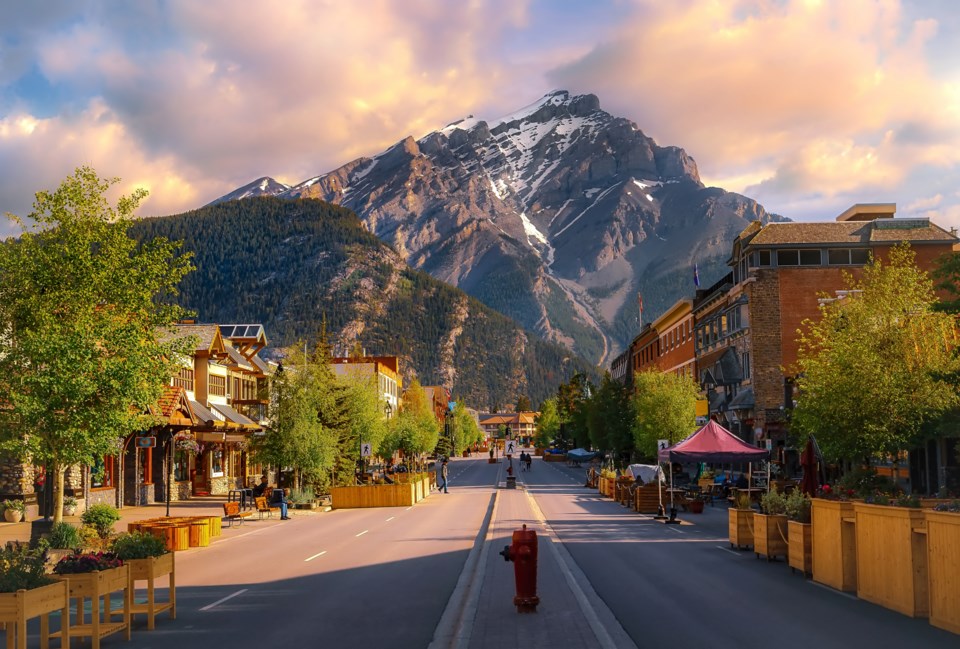Regular Pique readers may recall an anecdote, which has appeared in these pages on at least two occasions, about a former municipal councillor and a suddenly irrelevant book.
The councillor was John Grills, and the book was something to do with overtourism—still a hot topic and going concern in late 2019 and the first few months of 2020.
And then… well, you know the rest.
COVID happened, and the book gathered dust. With last fall’s election, Grills retired from local government.
But with COVID seemingly now little more than a miserable afterthought, at least as far as restrictions and border closures go, the issue of overtourism has come roaring back—much to the chagrin of elected officials near and far.
Like in Banff, which, like Whistler, has had its own well-documented struggle with increasing visitation in recent years.
The Alberta tourism mecca hosts about 4 million visitors every year, and in July 2022 it welcomed just under 700,000 guests—the most it has seen in any single month since 2013.
In response, Parks Canada announced last month it will restrict parking for most visitors at the mega popular Moraine Lake. According to a news release, the national parks organization required flaggers onsite at all times during peak periods in 2022, and at summer’s busiest peaks, the parking lot remained full nearly 24 hours a day.
Visitors looking to take in Moraine’s picture-perfect views will have to take a shuttle or public transit from now on.
As in Whistler, Banff locals have been ringing the alarm bells of overtourism for some time.
“We have been trying to sound the alarm on ever increasing visitation and the accompanying lack of planning foresight for well over a decade,” said Reg Bunyan, vice-president of the Bow Valley Naturalists, in a 2020 interview with the Rocky Mountain Outlook. “We suspect we are close to a tipping point.”
Now, it would seem, the call is being answered.
Last month, officials in Banff unveiled a new 10-year vision for tourism in Banff and Lake Louise.
The vision, titled Lead Tourism for Good, will serve as a “guidepost” for community leaders and organizations as they guide the region through the next decade.
“The document itself addresses environmental sustainability, community well-being, cultural integrity, and economic prosperity,” reads the preamble on the plan’s website, tourismtogether.ca. “The Vision is intended to complement other long-range plans; such as the Parks Management Plan and municipal plans.”
The overall thrust of the plan is to, (spoiler alert), “lead tourism”—both for the good of people and the park itself.
“This means developing and inspiring new and meaningful ways to enjoy this place and leave it even better than it is now. It means continuously changing and adapting tourism for good because, in a place which is proudly 97-per-cent wilderness, we must be wildly innovative within the limits of the remaining 3 per cent,” the plan reads.
“It means collaboratively creating a future where Indigenous Peoples and businesses are present and thriving within the park. It means championing an industry and community that is welcoming, safe and inclusive for those living, working and playing here. A future where this awe-inspiring place continues to be shared in transformative ways that bring out the best in each of us and inspires stewardship in all of us—and in generations to come.”
It’s a laudable mission statement, to be sure, and not unlike the discussion taking place around visitation in Whistler in recent years.
Here in our own desirable little corner of the world, Tourism Whistler is undertaking a similar journey, which began with a community-wide engagement process in 2019.
Through that process, officials asked many of the same questions being explored in the new Banff plan: What makes us special or unique? What do we want to protect for generations to come? What does ideal tourism look like in the future?
That engagement had a direct influence on TW’s strategic purpose (“To honour, protect and celebrate Whistler’s unique mountain culture and environment”) as well as its vision (“To be the most valued, respected and regenerative mountain resort-community”).
TW’s engagement and research efforts have also informed the Resort Municipality of Whistler’s (RMOW) Official Community Plan, adopted at long last in 2020, with its wonderfully succinct guiding vision statement: “Whistler—A place where our community thrives, nature is protected, and guests are inspired.”
In 2021 and 2022, the RMOW also engaged the community through its “Whistler Sessions” planning exercise, which envisioned five potential scenarios for the future of Whistler—and how the community might respond.
“We have much more work to do as a community, but all of the above has been in motion since 2017, with the pandemic creating a challenging interlude, but also a lightning rod for a better future,” said TW’s president and CEO, Barrett Fisher, in an email.
“We are also planning a joint community engagement session with resort partners, residents and businesses in future.”
It’s encouraging to read about all the different ways officials, both here in Whistler and elsewhere, are working to deal with ever-increasing visitor numbers.
Because the problem of overtourism is not unique to Whistler—and it’s not going away anytime soon.




